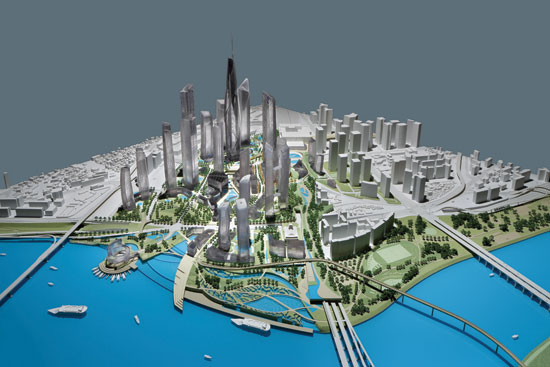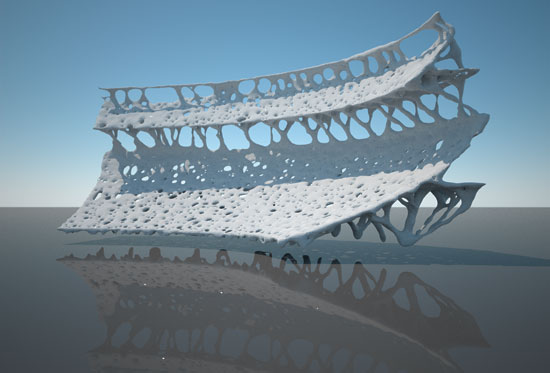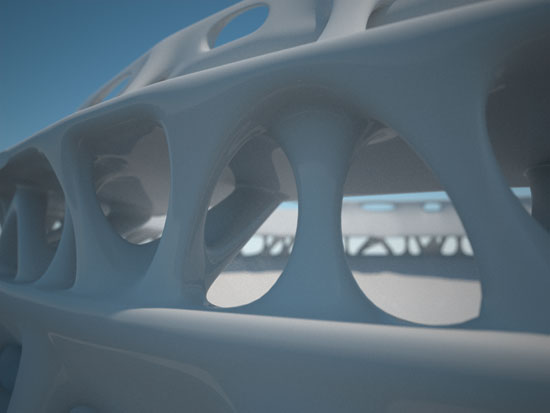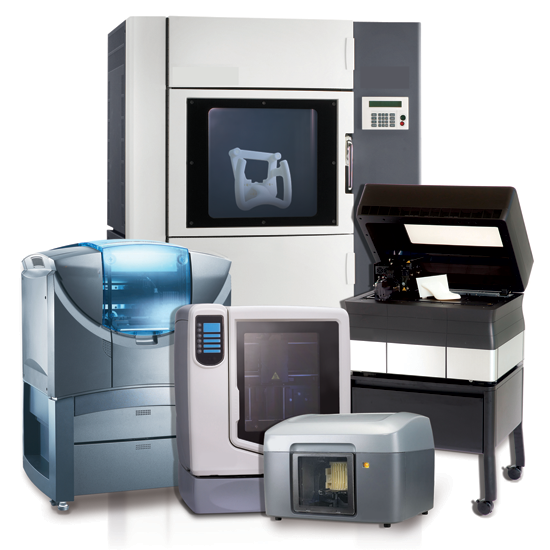Using 3D Printers to Create Architectural Models
Learning Objectives:
- Identify and recognize the capabilities and characteristics of three-dimensional printing technology.
- Investigate the ways that 3D printing of architectural models can be used to enhance the building design process.
- Assess the materials and process options for creating models of different sizes and inherent structural strength.
- Incorporate 3D printing as part of a typical building design process as a stand-alone technique or as a supplement to other
- digital design processes.
Credits:
Architects have routinely created scale models of building designs to serve multiple purposes. In some cases, they have been simple conceptual models to study the relative sizing or massing of a particular design in a given context. In others, they have been detailed explorations into the relationship of spaces, shapes, and materials. In all cases they help with three-dimensional visualization of the proposed designs whether by the design team, the client, the public, or all of these. The process of creating such architectural models has varied based on need and capabilities. Historically, simple in-house model building has been based on cardboard or wooden representations cut with hand tools. More advanced models have been prepared by companies specializing in creating detailed creations based on architects' designs that use machine-cut wood, plastic, or other materials supplemented with features to represent natural features such as trees, terrain, etc. Now, there is also a new option available to any design team—the use of 3D printers to create architectural models of all types and detail. This conceptually simple but revolutionary technology allows new freedom in the design process to explore building designs in three dimensions and in a manner that can be quicker and less expensive than traditional architectural models. Further, 3D printing combines the precision of computerized design simulations with the tangibility of physical scale models.
3D Printing Technology
Over the past 25 years or so, printing technology in general has developed side by side with advances in computer technology. Anyone who has printed drawings or documents on paper during this time has experienced the transformation of ammonia-based “blueprints” and black line prints to computer-generated drawing outputs using pen plotters, inkjet plotters, and laser printers. At the same time, while architects have been immersed in using computer-aided drafting (CAD), those in the industrial design world have experienced computer-aided manufacturing (CAM). This technology has been based on creating 3D objects for prototyping or testing typically by using a subtractive approach. This means that a solid piece or block of material (wood, metal, etc.) is placed in a machine that follows the computerized design instructions to remove or subtract all of the material that is not needed, leaving the final product at the end. It is essentially 3D sculpting via a computerized machining process.

Image courtesy of Stratasys, Ltd.
Conceptual scale models can be created from 3D printers showing the surrounding context of a particular project differentiated by materials from the proposed designs.
With all of the CAD, CAM, and printing advances that have taken place, it is not surprising to see that 3D printing technology has grown up in this time too. The term 3D printer was originally a trademarked name but in 1999, it was allowed to enter the public domain and become a generic industry term. Just as a 2D inkjet printer places ink on paper using the X and Y axes based on a computer file, 3D printers place solid material on a base using computerized information for the X, Y, and Z axes. However, instead of the subtractive process used in CAM, a 3D printer creates objects using an additive manufacturing process which deposits material in a succession of layers from the bottom up. This means that there is no waste—only the material needed to create the object is used. That material is not ink as in a 2D printer, but typically some type of plastic that is heated slightly so it flows through printer heads or sprays through jets and then re-solidifies as it cools or is exposed to ultraviolet light.



Images courtesy of Stratasys, Ltd.
A completed 3D printed model can show the form and mass of a building or focus on a portion with as much detail as needed for design review.
3D Printing Equipment Options
3D printers are available to produce a variety of sizes of printed output, just like ink on paper printers, from small to large format. Small 3D printers are reasonably priced and can be readily incorporated into most design offices on a table or desktop. As a time-saving approach, they can be set up and programmed to run overnight unattended. Larger 3D printers or multiple units may be warranted if a lot of models are created. Alternatively, businesses are available that will do 3D printing (just like paper printing) from CAD files.
Two different technologies are commonly used in 3D printing of architectural models:
▶ Fused deposition material (FDM). This production process occurs as layers of plastic material are placed on top of each other. FDM printers build three-dimensional objects by melting and advancing one or more fine ribbons of plastic through a computer-controlled extrusion head into layers. The plastic cools and is ready for the next layer. FDM printers are useful for building concept models, functional prototypes, and end-use parts in standard, engineering-grade and high-performance thermoplastics. It's the only professional 3D printing technology that uses production-grade thermoplastics, so parts can be very high in mechanical, thermal and chemical strength and remain environmentally stable. That means complex geometries and cavities that would otherwise be problematic become practical with FDM technology. Other benefits include a technology that is clean, simple-to-use, and office-friendly.
▶ PolyJet technology. PolyJet 3D printing is similar to inkjet printing, but instead of jetting drops of ink onto paper, PolyJet 3D printers spray precise layers of curable liquid photopolymer onto a build tray. As such, PolyJet technology is a powerful additive manufacturing method that produces smooth, accurate prototypes, parts, and tooling. With 16-micron layer resolution and accuracy as high as 0.1 mm, it can produce thin walls and complex geometries using the widest range of materials. Its characteristics may be better suited to prototyping manufactured parts, but it can also be useful when precise, detailed models are needed in architectural settings. It is able to create smooth, detailed objects that convey final-product aesthetics. It can also produce complex shapes, intricate details, and smooth surfaces that incorporate color and diverse material properties into one model with the greatest material versatility available.

Image courtesy of Stratasys, Ltd.
3D printing equipment is available in a variety of sizes for a variety of needs using different types of materials that can make architectural models.









